Climate change is causing rapid, deeper and more extensive acidification in the Arctic Ocean
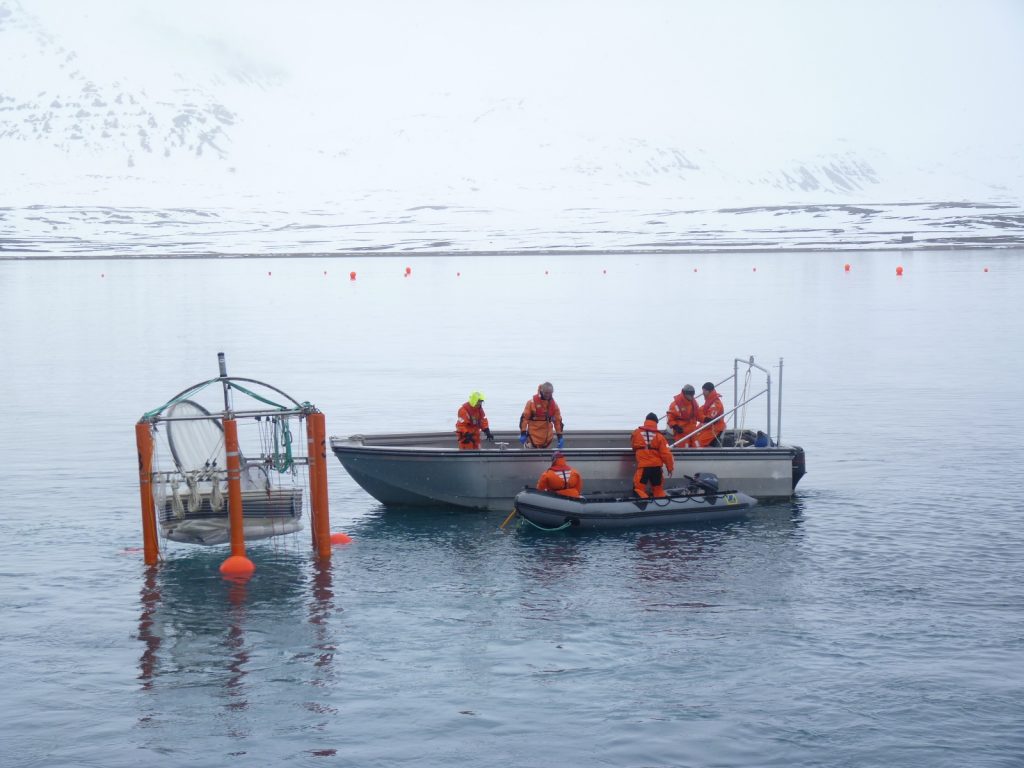
Scientists measure ocean acidification off the coast of Svalbard. (I.Quaile)
A new study reported in Nature Climate Change this week says ocean acidification is spreading rapidly in the western Arctic Ocean in both area and depth. That means a much wider, deeper area than before is becoming so acidic that many marine organisms of key importance to the food chain will no longer be able to survive there.
The study by an international team including scientists from the USA, China and Sweden, is based on data collected between the 1990s and 2010. Presumably, things have got worse rather than better since then. Unfortunately, it takes a long time for scientific research to be evaluated, reviewed and published, so current developments can easily overtake assessments which are already alarming enough in themselves. So yes, I would say this should make us sit up and listen, and lend even more urgency to the need for reducing emissions and combating climate change.
Acid bath for shellfish
Ocean acidification is a process that happens when carbon dioxide out of the air dissolves in the sea, lowering the pH of the water. This reduces the concentration of aragonite in the water, a form of calcium carbonate which shellfish and other marine organisms use to build their shells or skeletons. If the water becomes too acidic, this cannot be formed to the same extent, leaving the animals without their protective shells.
The latest published research shows that acidification is not only affecting much wider areas of the Arctic Ocean, but also that it is happening down to a much greater depth than before.
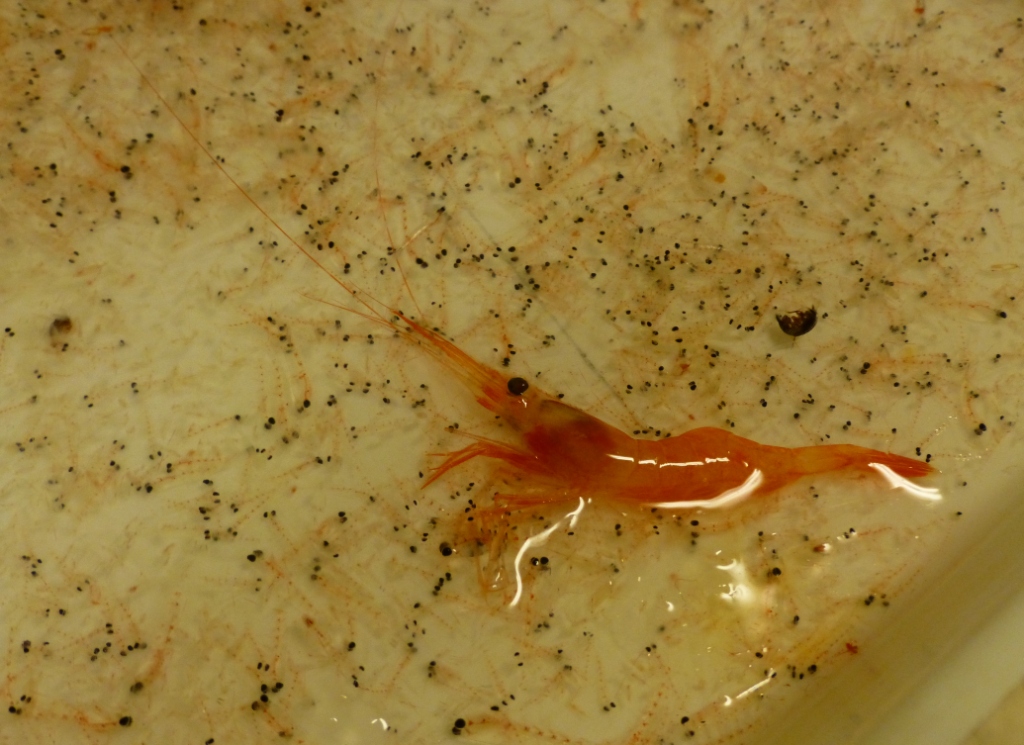
Arctic residents like shrimps like cooler water – and need calcium to form their shells. (Pic: I.Quaile, Svalbard, on board Helmer Hanssen research vessel)
Between the 1990s and 2010, acidified waters expanded northward around 300 nautical miles from the Chukchi slope off the coast of northwestern Alaska, to just below the North Pole, the scientists write. At the same time the depth of acidified waters has increased from approximately 325 feet to over 800 feet, or from 100 to 250 metres.
“The Arctic Ocean is the first ocean where we see such a rapid and large-scale increase in acidification, at least twice as fast as that observed in the Pacific or Atlantic oceans”, said Professor Wei-Jun Cai from the University of Delaware and Mary A.S. Lighthipe, Professor of Earth, Ocean and Environment at the same University. Cai is the US lead principal investigator on the project.
“The rapid spread of ocean acidification in the western Arctic has implications for marine life, particularly clams, mussels and tiny sea snails that may have difficulty building or maintaining their shells in increasingly acidified waters”, said Richard Feely, senior scientist with NOAA and a co-author.
Tiny sea snails called pteropods are part of the Arctic food web and important to the diet of salmon and herring. Their decline could affect the larger marine ecosystem.
Among the Arctic species potentially at risk from ocean acidification are subsistence fisheries of shrimp and varieties of salmon and crab.
The polar regions are suffering more than others, because cold water absorbs CO2 faster.
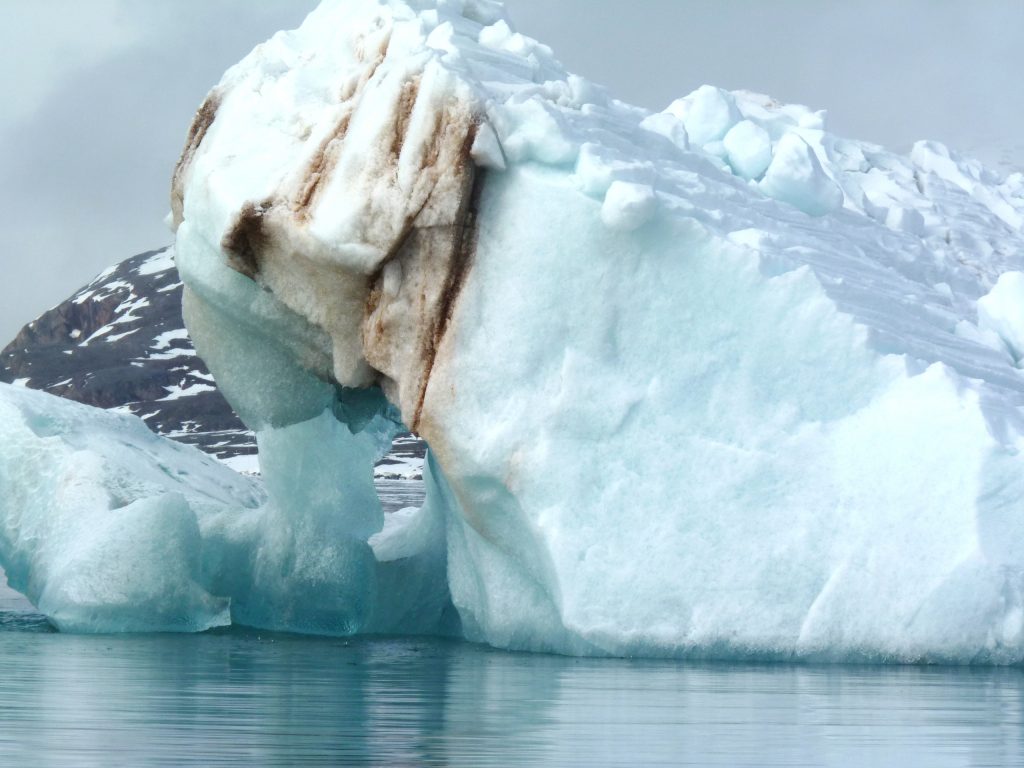
The icy waters of the Arctic are particularly susceptible to acidification (I.Quaile)
Less ice to hold back warm water
The acidification study published this week used water samples taken during cruises by the Chinese ice breaker XueLong (snow dragon) in the summer 2008 and 2010 from the upper ocean of the Arctic’s marginal seas, right up to the North Pole, as well as data from three other cruises going back to 1994. The data, along with model simulations, suggest that increased Pacific Winter Water, driven by circulation patterns and retreating sea ice in the summer season, is primarily responsible for the expansion of ocean acidification, according to Di Qi, the lead author of the paper.
This water from the Pacific comes through the Bering Strait and shelf of the Chukchi Sea into the Arctic basin. Melting sea ice is one factor which allows more of the Pacific water to flow into the Arctic Ocean. The Pacific Ocean water is already high in carbon dioxide and has higher acidity. As it moves north, its acidity increases further for various reasons.
The melting and retreating of Arctic sea ice in the summer months also lets Pacific water move further north than in the past.
The scientists have observed that Arctic ocean ice melt in summer used to occur only in shallow waters with depths of less than 650 feet or 200 meters. But now, it spreads further into the Arctic Ocean.
“It’s like a melting pond floating on the Arctic Ocean. It’s a thin water mass that exchanges carbon dioxide rapidly with the atmosphere above, causing carbon dioxide and acidity to increase in the meltwater on top of the seawater”, said Cai. “When the ice forms in winter, acidified waters below the ice become dense and sink down into the water column, spreading into deeper waters.”
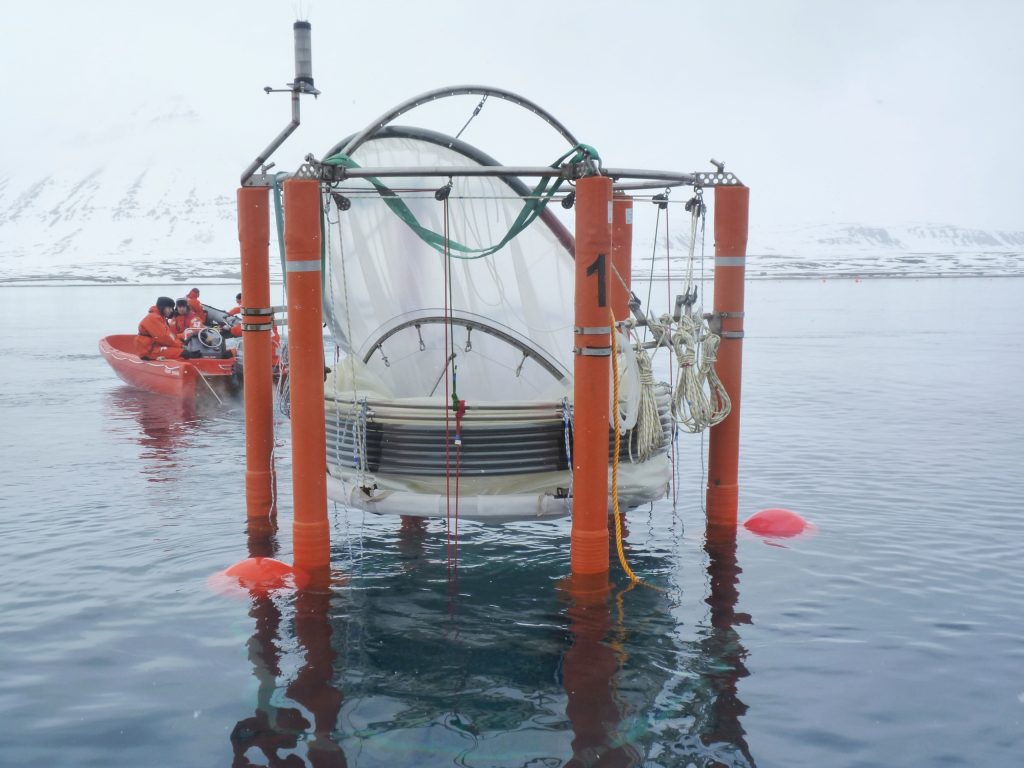
These mesocosms are used to research the effects of acidification on ocean-dwellers. (I.Quaile)
Climate chaos – not just for polar bears
In 2010, I spent some time with scientists conducting the world’s first experiments in nature, off the coast of Svalbard, to establish exactly how increasing acidification affects the flora and fauna in the Arctic Ocean.
Mesocosms, or giant test-tubes, were lowered into the sea to capture a water column with living organisms inside it. Different amounts of CO2 were added to simulate the effects of different emissions scenarios in the coming decades.
Similar experiments are still being conducted in different ocean areas. Results so far have been scary to say the least.
Mussels, snails, sea urchins, starfish, coral, fish, “some of these species will simply not be able to compete with others in the ocean of the future”, Ulf Riebesell from the Helmholtz Institute for Ocean Research in Kiel, GEOMAR, told me in an interview back in 2013, when he was a lead author of a report by the International Programme on the State of the Oceans (IPSO). He was also one of the scientists in charge of that first Arctic acidification in situ experiment I witnessed back in 2010. He is currently coordinator of the German national project Biological Impacts of Ocean ACIDification (BIOACID).
Riebesell says the sea water in the Arctic could become corrosive within a few decades. “The shells and skeletons of some sea creatures would simply dissolve”, he told me.
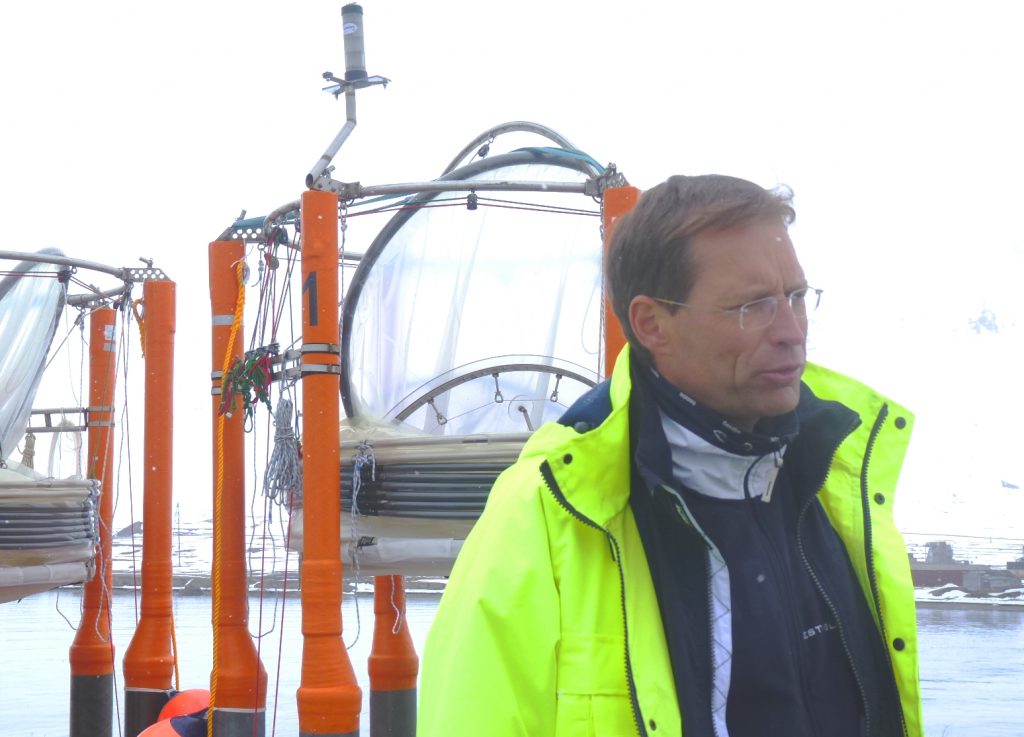
Ulf Riebesell supervising the deployment of mesocosms off Svalbard. (Pic. I.Quaile)
Those feedback loops
February 27th was Polar Bear Day. Attention focused on how the decline of sea ice is having devastating impacts on those iconic creatures, who have become a key symbol of the effect of our human-induced climate change on the Arctic. Sea snails may not be quite as charismatic, but the related threat to all these tiny organisms in the water is no less worthy of our attention. Journalist Chelsea Harvey of The Washington Post writes:
“The Arctic is suffering so many consequences related to climate change, it’s hard to know where to begin anymore (…) The study highlights the interconnected nature of climate consequences in the Arctic – the way that greenhouse gas emissions, rising temperatures, ice melt and ocean acidification are all linked and help to reinforce one another. And it points to yet another example of a climate effect that’s not just a concern for the future, but is already an issue – and a growing one – today.”
Indeed, Chelsea. Climate change is already changing our lives and our planet. And, of course, what happens in the Arctic doesn’t stay in the Arctic. The scientists studying ocean acidification and its impacts are also concerned about a feedback effect that will further exacerbate global warming.
When the IPSO report on the state of the oceans was published, I interviewed the organisation’s scientific director Alex Rogers, a professor of conservation biology at the University of Oxford. He told me the oceans were already taking up about a third of the carbon dioxide we are producing. The report said sea water was already 26 percent more acidic than it was before the onset of the Industrial Revolution – and it could be 170 percent more acidic by 2100. In the long run, the ocean will become the biggest sink for human-produced CO2, but it will absorb it at a slower rate.
“Its buffer capacity will decrease, the more acidic the ocean becomes”, Kiel-based scientist Ulf Riebesell told me.
The IPSO report also drew a very unsettling comparison between conditions today and climate change events in the past that have resulted in mass extinctions:
“On a lot of these major extinction events we see the fingerprints of high temperatures and acidification, similar effects to the ones that we are experiencing today”.
Now there is a frightening possibility.
It is not too late to do something about this, although the experts stress the CO2 will remain in the oceans for thousands of years. The scientists tell us the key step would be to reduce greenhouse gas emissions, but also to reduce pollution and other pressures on the ocean ecosystem, which reduce its resilience. High time for the Clean Seas initiative, to reduce ocean pollution from marine litter, especially from plastic, launched this week by the United Nations Environment Programme.
















Feedback